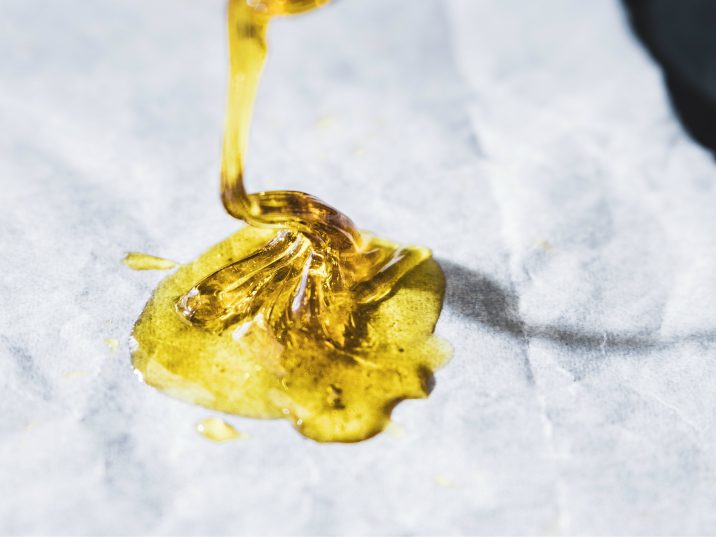Have you ever heard of rosin? if not, get ready for a cannabis DIY experience theat could change your high life forever. Rosin is a concentrate made by exposing cannabis to heat and pressure in order to force out the terpenes in the trichome glands. It is very easy to make rosin out of flower using just a few tools you probably already have!
Cannabis Rosin is by definition solventless meaning no added chemicals were used in the process hence making it the purest cannabis concentrate. It is like squeezing the oil out of an olive. The rosin process literally presses the starting material until it oozes a sticky, cannabinoid and terpene rich goo.
Supplies For Making Rosin
Hair Straightener
Parchment paper
Weeeeeeeed
Tools to collect finished rosin(Dabber, tootpick)
Container for finished rosin
Temperature plays a big role in determining the quality and over all youeld of your rosin-making efforts. The ideal temperture is heavily dependent on whether your cannabis is terpene-rich or not. This is because the terpenes squeezed out of the trichome glands during the initial press act as a natural solvent to facilitate the process. If the strain has fewer terpenes, you will need more pressure to bring out the cannabinoids

Nugs can be pressed directly in parchment paper but hash or kief should be placed in a rosin screen.
Choosing the rosin screen size is a delicate balance. Finer mesh screens (25-45 microns are ideal for any form of kief or hash.Larger mesh screens (70-120 microns) can be used for either lightly ground nugs or trim.
Steps For Making Rosin
Time needed 30 minutes
- Gather Your Ingredients
- Hair straightener
- Parchment paper (not wax paper)
- Cannabis (flower, kief, or hash)
- Dabber or other tool to collect the finished rosin
Container for the finished rosin (if you make more than a dab or two at a time)
- Hair straightener
- Gently flatten the bud a bit with your hands
- It’s not necessary to grind your bud but just gently flatten it a bit with your hands to make the press easier. Check to make sure the nug you’ve chosen will fit inside the parchment and the flat surface of the straightener. Make sure to use buds that are properly cured and not too wet or too dry.
- Add the bud to the rosin bag
- If using a rosin bag, place the plant material into it. We recommend nylon food-grade screens or a mesh bag. (This step is optional for flower, but necessary for hash or dry sift.)
- Adjust the straightener or press temperature
- Set the temperature on your hair straightener or press. Start with low temperatures and work your way up. High temps are quick but can scorch your material and result in dark, runny rosin.
- Place your flower between parchment paper
- Place your bag or loose flower between two pieces of parchment paper. Use only as much material as will fit under the heating element. Leave a couple of inches of extra parchment paper on all sides to catch the rosin. You don’t want it to spill over onto the plates
- Press until you hear a sizzle
- Press the parchment paper with the preheated straightener for four to 30 seconds. The time you need to press depends on the quality of your flower but release when you hear a sizzle. Pressing firmly with the straightener laying flat like a stapler will generally yield better results. This may take a few attempts to get the hang of it.
- Check the oil
- After removing the flower from the parchment paper, check the amount of oil.
- Repeat until there is no rosin
- You can reposition the nug on a clean spot on the paper or use fresh paper to press again. Repeat until there’s no more new rosin coming out.
- Use dabber to collect the rosin
- Once you have finished pressing your product, use a dabber to collect the rosin
- Store the rosin
- Package or store the rosin for later use (between parchment is fine if you plan to use it soon). You can also turn it into rosin taffy by stretching, pulling, and twisting it with the dabber until it’s a taffy-like consistency.
What’s a “good” yield?
The goal of pressing rosin is to get all the cannabinoids and terpenes out of the trichome glands. Theoretically, if your cannabis has 18% cannabinoids and 2% terpenes, the yield you’d get from pressing 1 gram of flower would be 0.2 grams of rosin. Of course, a lot of factors contribute to the overall output as well as the quality of your rosin.
If you don’t feel like you got everything out of your first run, you can always grab new parchment paper and press the cannabis again. Increasing the temperature or pressure on your second run will ensure you get every last bit of oil out of your product.
Keep in mind that when you’re pressing nugs to make rosin, you’re squeezing the plant matter. That plant matter can make its way into your final product, but that doesn’t mean your product is bad. Practice makes perfect, and the more you get your set-up and filtering processes down, the higher quality rosin you’ll be able to produce.
How do the pros press rosin?
Professional rosin manufacturers and at-home enthusiasts may opt to purchase press kits that contain hydraulic presses, heat controllers, and more in order to process larger quantities of rosin and have better control over all the parameters involved. Rosin press prices range from $120 to more than $4,000, with an array of accessories to customize your setup.








